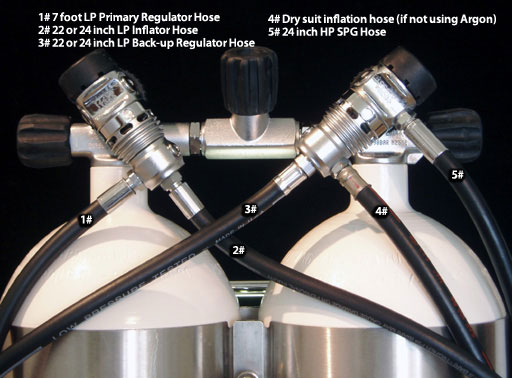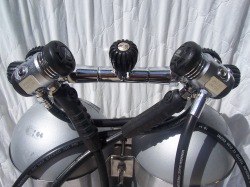I agree and those are the hoses that take the most abuse. I used to worry about that until I read some very compelling research that use of nitrox mixes reduces hose life by about 40%. Since I often dive florida caves with 30%-32% back gas mixes, I figure that replacing those hoses every few years is just prudent anyway. So any additional stress/wear on the outer casing from excessive bends when the rig is assembled is just an incentive and reminder to replace those as well as the other hoses before the inner section of a hose decides it has had enough.
Or buy Miflex hoses and don't worry about it.
Personally, though, I like the hose routing on the MK25 much better, both for doubles and single tank use.
These seem much cleaner to me:


Compared to this:

That said, my first choice would probably have been the MK19, had ScubaPro not been so moronic about it.
FWIW, I normally dive a drysuit with a standard SPG, so I'm always going to have 4 hoses, except when I'm diving wet. (rare)




